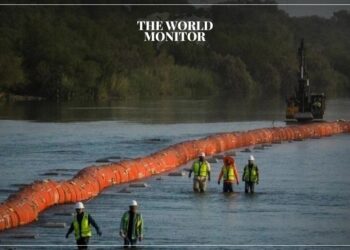The World Health Organization estimates that approximately one million Yemenis contract malaria annually, and the average life expectancy in the country has decreased from 66 to 64 years. It also stated that 62,000 children under the age of five die each year due to the deterioration of healthcare services, while 70% of pregnant and nursing mothers suffer from anemia.
According to the 2024-2025 cooperation strategy between the UN organization and the Yemeni government, the maternal mortality rate is high; estimated at 183 deaths per 100,000 live births. Data from the latest health demographic survey conducted in 2013 showed that more than 70% of pregnant and nursing women suffer from anemia, with no improvement since then.
The strategy warns of the recurring negative impacts of climate change-related emergencies, such as floods, sandstorms, extreme hot weather, and storms on the health of the population, especially the elderly who are in dire need of assistive technology. It mentions that about 62,000 children die annually in the country before reaching their fifth birthday.
The Yemeni-UN strategy clarified that the under-five mortality rate in the country has been rising in recent years, reaching 62 deaths per 1,000 live births in 2021, with some limited improvement noted between 2021 and October 2023, where the rate decreased to 41 per 1,000 live births, despite a higher mortality rate among boys (45 per 1,000) compared to girls (35 per 1,000).
The strategy also states that Yemen could achieve significant gains in sustainable growth and poverty reduction by 2030. It suggests that the dynamics and the rapidly changing social and political environment will likely impact the implementation of a carbon retention strategy, necessitating annual reviews to facilitate necessary adjustments.
Results from the Multiple Indicator Cluster Survey indicate no significant change in the trend for all child mortality rates over the past fifteen years. Neonatal mortality rates slightly decreased from 22 to 21 per 1,000; infant mortality rates from 39 to 35 per 1,000; and under-five mortality rates from 44 to 41 per 1,000.
The ongoing armed conflict in Yemen, which has lasted over nine years, has limited the Ministry of Public Health and Population’s capacity to focus on enhancing the health system, crucial for providing high-quality, affordable health services.
The WHO noted that adopting a health system approach has been overlooked for several reasons, including limited expertise in leadership and health governance, and a lack of public health and health management skills.
The strategy mentions that these factors have reduced the ministry’s ability to efficiently carry out its main tasks, impacting performance and operational capacity. Strengthening the leadership capabilities of the ministry and investing in effective governance and strong leadership will ensure the efficient and equitable delivery of health services.
The WHO also warns of malnutrition, noting that it poses a significant public health concern, with nearly half of Yemeni children under five experiencing stunted growth, and over two million children suffering from severe malnutrition, raising their risk of death.
The conflict has also contributed to a mental health crisis in the country; an estimated 8 million people need medical intervention for mental health disorders. Yemen is also highly vulnerable to epidemic risks and vulnerabilities.
The Yemeni-UN strategy reveals that Yemen is experiencing simultaneous outbreaks of vaccine-derived poliovirus type 2, cholera, measles, diphtheria, whooping cough, malaria, and dengue fever.
Vaccination coverage is low, particularly in provinces under Houthi control, where there is a growing politicized sentiment against vaccinations.






